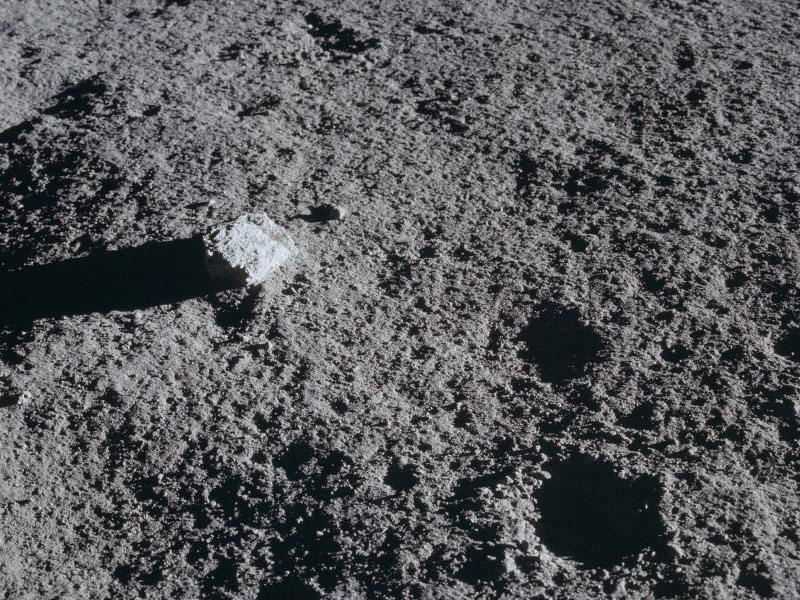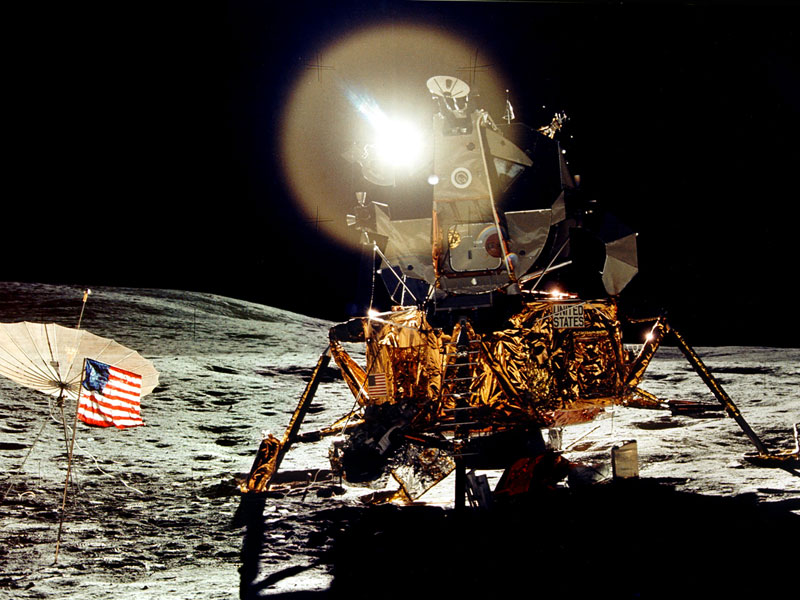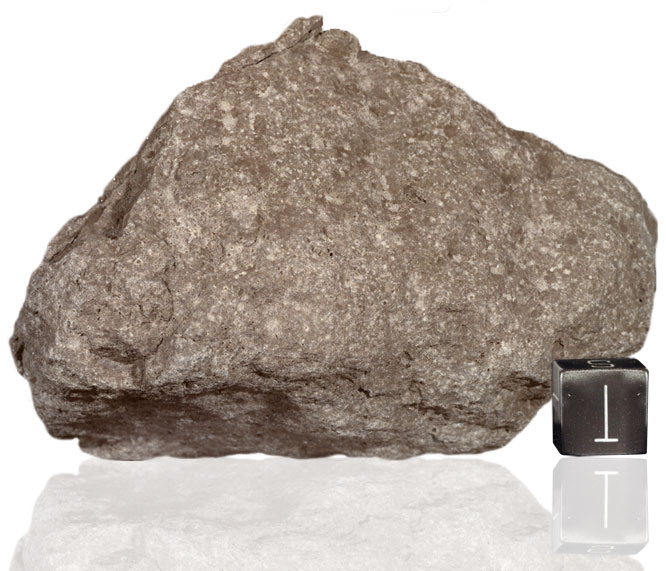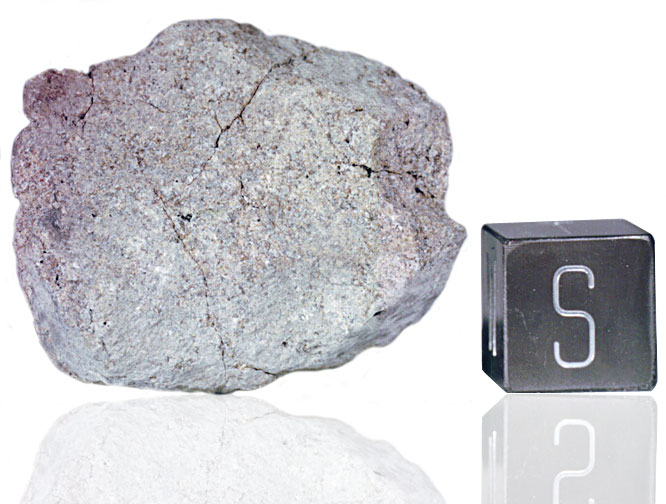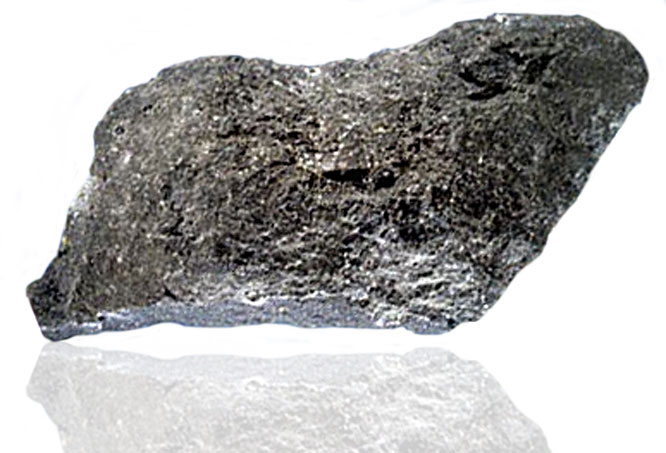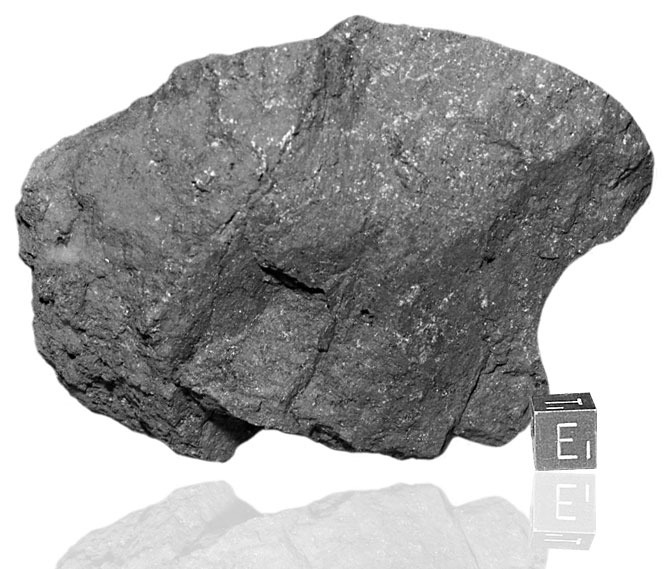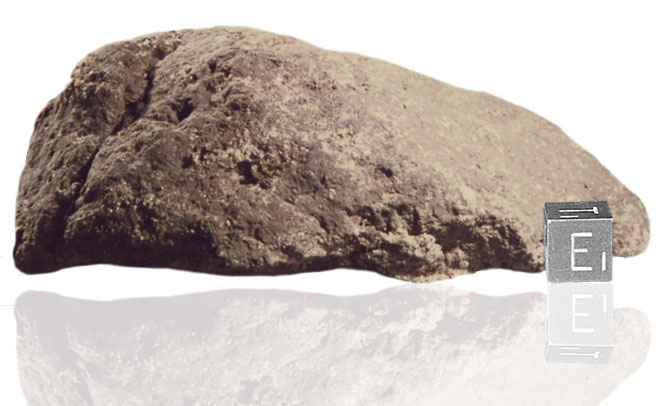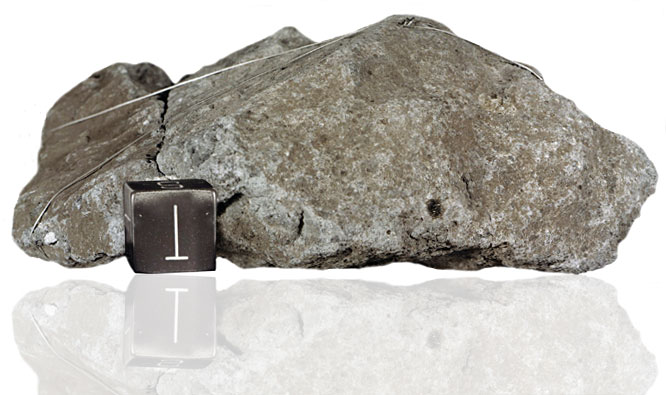
Fact sheet
Sample 14305 is a clast-rich polymict breccia with a fine-grained microcrystalline matrix. The sample was collected 80 metres from the Lunar Lander Module during the Apollo 14 mission to the Moon and has been dated at 3.82 billion years. The specimen is a composite of soil, rock and mineral fragments welded into a breccia, that was probably part of the Fra Mauro formation, named after the 80-kilometer-diameter crater, and the landing site of the Apollo 14 mission.
In thin section, most of the clasts are microbreccias, although clasts of mare basalt, granite, gabbronorite, anorthosite and troctolite are also present. Several impact events are required to explain the textures observed since the breccia fragments formed in earlier events and were rebrecciated and incorporated in the present rock. The final thermal event produced a melted matrix but it was not hot enough to digest the various lithic clasts.
Further details of this and other Apollo samples are here: http://curator.jsc.nasa.gov/lunar/
